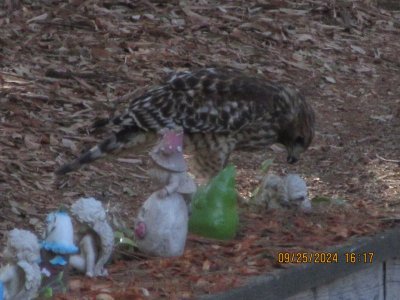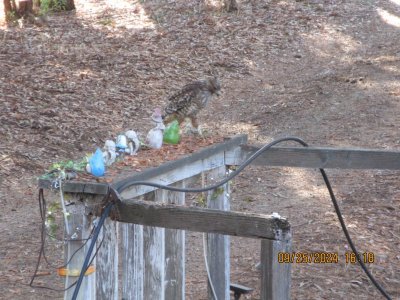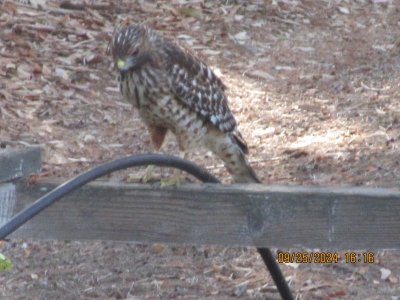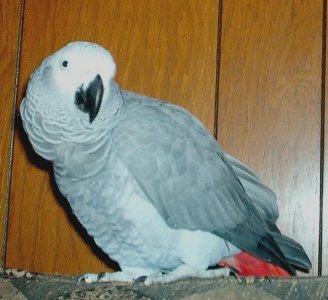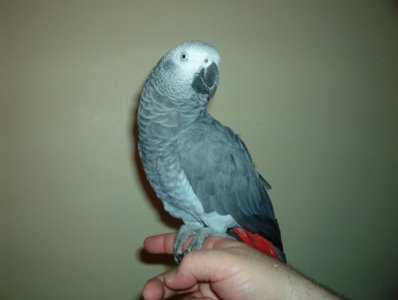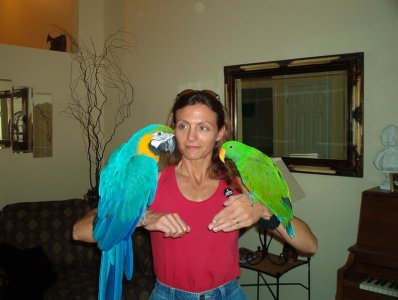Kizzy's Story:
From 2000 to 2004, my wife and I lived in the Salt Lake City area. We were members of the Wasatch Avian Education Society (WAES) that did the full range of avian stuff -- education, rescue, fostering, etc. We agreed to be foster "parronts" of various birds that were surrendered to WAES for whatever reason. We fostered several birds before encountering Kizzy, a Congo African grey parrot.
Rules were strict with this group. Any bird coming into the organization had to be quarantined for at least 30 days -- even after the required avian vet check. OK, fine, to a point. Eventually, cages have to be cleaned and we had to take measures that broke that quarantine, even for a short time. So I dragged Kizzy's cage upstairs from the basement where she was quarantined, and installed her on a perch next to the patio door.
As I was cleaning other cages at the same time as Kizzy's, I had three cages in a relatively small area of the kitchen. All was fine, until I started disassembling Kizzy's cage and taking the parts outside to be washed. I was careful with the screen door, but I didn't count on tripping and falling backwards through the screen door, which, of course, opened up Kizzy to the outdoors. It took her about 3 nanoseconds to fly out the patio door to parts unknown.
Keep in mind, this is not our bird. We're fostering her. So we spent the rest of that Saturday searching for her, printing out flyers, posting them in the area where we thought she might be. Nothing.
My wife came home from a gig and she asked me if I had posted a flyer at a neighborhood pet shop. Nope, I said. I was beating feet elsewhere. She took one over to the pet shop and we waited.
The next day, we got a phone call from a person who had seen the flyer in the pet shop. "We think we see the bird you're missing, up in a tree in our neighborhood." This neighborhood was about 100 yards from our house in the opposite direction of where I had seen her fly while I was flat on my back on the patio.
So like a flash, on a Sunday morning, we flew over to the area where the woman said she saw Kizzy. Sure enough, there she was, about 200 feet high in a tree. Tried all kinds of things to get her to come to me (I was her favorite), but no dice. An extremely nerve-wracking point came up when Kizzy was attacked by a kestrel -- we really thought she was a goner. But Kizzy eluded the kestrel and then my wife went home to get some raw peanuts.
Kizzy loved raw peanuts and when she saw me with those, she flew down to me. I cradled her, detaining her, until we could get home.
There were some unhappy people within WAES, especially concerning the quarantine issue, but we were relieved and happy to have recovered Kizzy.
Kizzy eventually went to a person who adopted her.
Dodged a bullet on that one.
View attachment 369992







